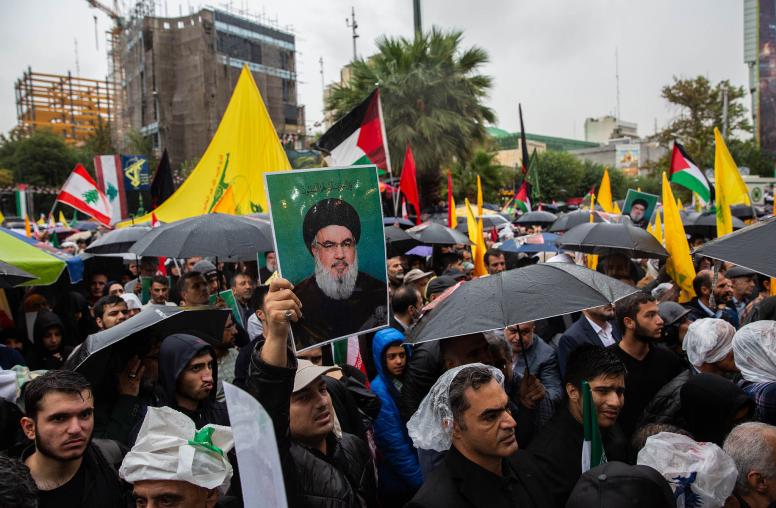Iran Oil Sanctions: A Race against Time
International economic sanctions designed to force the Iranian regime to prove that it is not seeking to develop militarized nuclear capacity by targeting the country’s oil exports will take some time to be fully effective. Meanwhile, compensatory tactics by Iran and some of its trading partners and allowances for geostrategic reality in the global oil market could affect the efficacy of the sanctions regime.
International economic sanctions designed to force the Iranian regime to prove that it is not seeking to develop militarized nuclear capacity by targeting the country’s oil exports will take some time to be fully effective. Meanwhile, compensatory tactics by Iran and some of its trading partners and allowances for geostrategic reality in the global oil market could affect the efficacy of the sanctions regime.
On March 20th 2012, the United States ratcheted pressure on Iran by reiterating a system of tight sanctions on foreign banks that continue to transact business related to the sale of Iranian oil [Bloomberg]. This was done after the Obama administration determined that this sanctions regime would not significantly impact global oil prices. Importers of Iranian oil have until June 28th to demonstrate compliance or face being locked out of the U.S. financial system. Sanctions already announced by the European Union also take effect at the end of June [BBC].
The global oil market has been put on notice that the clock is ticking. Although Iran only produces an estimated 2.5 million barrels per day (bpd), enforcing the sanctions could have much wider ramifications including the potential disruption of traffic in the Strait of Hormuz which accounts for some 17 million barrels of oil daily [EIA]. A number of countries have already reduced purchases, costing Iran an estimated 300,000 to 500,000 bpd.
The two main compensatory mechanisms being observed are the development of evasion strategies and commodity stockpiling. One form of evasion would be the smuggling of Iranian oil on the world market through a process of discount purchasing, rebranding, and eventual re-sale. However, only a fraction of the country’s output would be able to be traded undetected in this manner. A second form of evasion would be less subtle and could involve some of Iran’s important trading partners – like China and India – either openly flouting the sanctions or requesting (and receiving) waivers from the United States and Europe. A third evasion strategy would involve bartering, which will not require financial transfers via the international financial system and would effectively circumvent the sanctions regime. Iran’s major trading partners could choose to exchange oil deliveries for food items like wheat and soya beans. This would ease both fiscal and domestic pressures on the regime.
There is also some evidence that some countries are stockpiling crude oil in anticipation of supply disruptions when the sanctions take full effect in June 2012 [China.org]. This trend could increase demand pressures on the global oil market which are unlikely to diminish because of assurances of adequate supply. Stockpiling is based on fears of disruption that are a function of the anticipated severity of the disruption and its expected duration. The more intractable the problem appears, the greater the likelihood that stockpiling will increase in the run up to the end of June and put upward pressure on oil prices, which serves Iran’s interests from a fiscal perspective.
Oil is a geostrategic commodity and contracting is quite complex. Consequently, Iran’s biggest customers will find it difficult to rearrange purchasing arrangements and contractual relationships in short order. This is why the United States has agreed to grant waivers to countries able to demonstrate a ‘significant’ reduction in their oil purchases from Iran [Bloomberg]. Japan and 10 European countries have already received waivers for reductions ranging from 10 to 20 percent. It is not unrealistic to anticipate that other countries would be accorded similar treatment. Naturally, there is a big difference between a comprehensive and complete sanctions regime and one that offers partial sanctions (by necessity, because of the waivers) and does not guarantee full compliance. An important consideration in this regard would be the net fiscal impact on the Iranian budget. Would this be enough of a fiscal squeeze to bring this problem to an expeditious conclusion?
Evasion and stockpiling could significantly cushion the impact of economic sanctions. Three important steps could be taken to mitigate theirs effects. First, economic sanctions are not a perfect instrument and certainly not effective alone. There is a need for more concerted diplomatic support and pressure to ensure success through coordinated international action, not just to implement the sanctions, but also to detect and deter evasion. Second, clearly defining what constitutes “significant reductions” for waivers and detailed analysis on net impact of waivers and stubbornly high (and increasing) oil prices is important to ensure efficacy. This would have the added benefit of identifying additional steps that could be taken to support and strengthen these economic sanctions. Third, there needs to be more detailed analysis of oil market fundamentals. Demand and speculatory pressures respond to different price/risk signals in the context of a sanctions regime. Understanding this dynamic more fully will be crucial for success.
Two mutually reinforcing processes are unfolding. There is the race to have an impactful sanctions regime in place as soon as possible, and another race to force Iran to reconsider its nuclear ambitions. Both are heavily dependent on an understanding of the geopolitics of the oil market, and neither enjoys the luxury of time.
[1] Research assistance from Brett Boor and Shadé Brown of USIP’s Center for Sustainable Economies is gratefully acknowledged.



